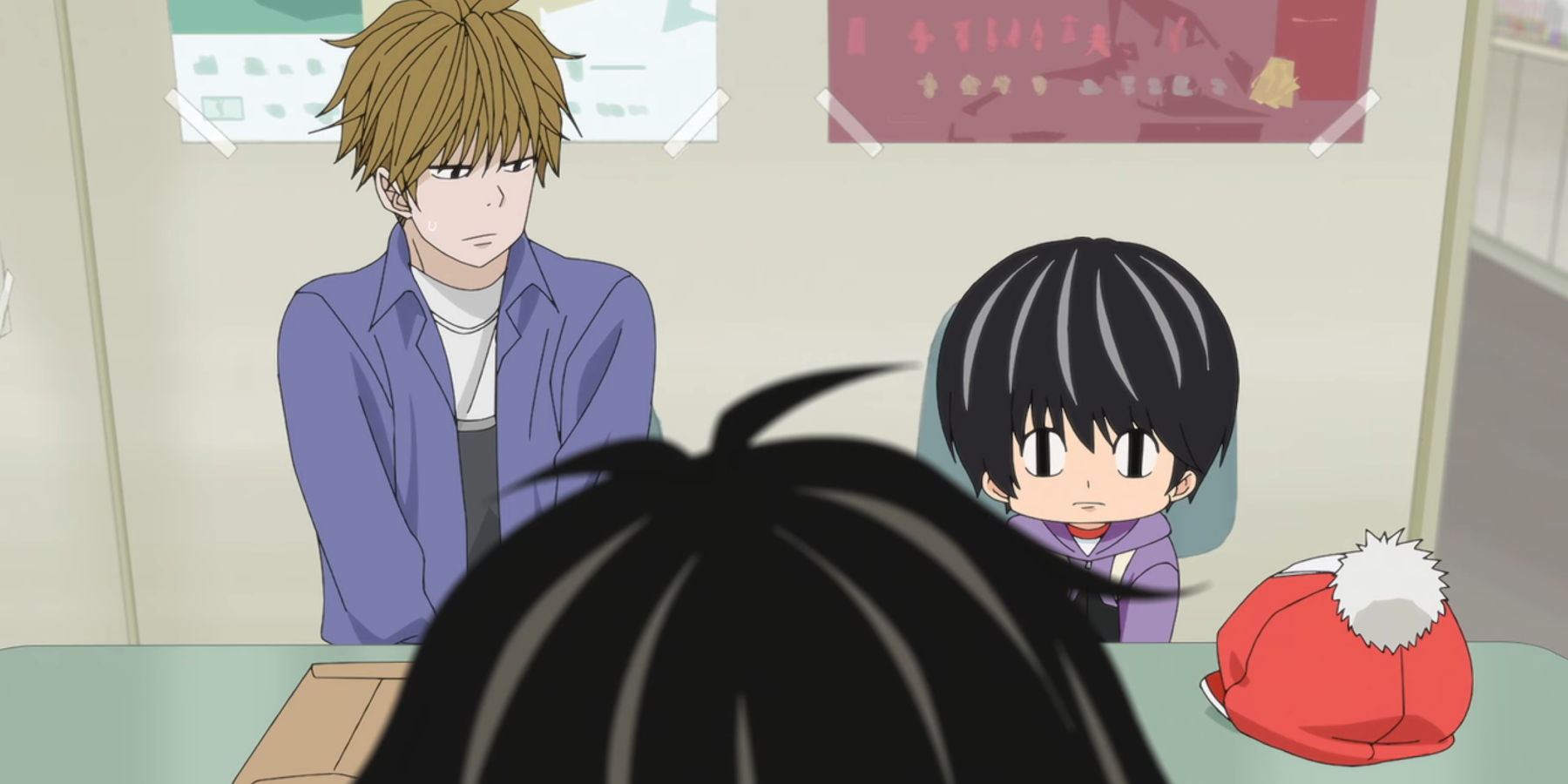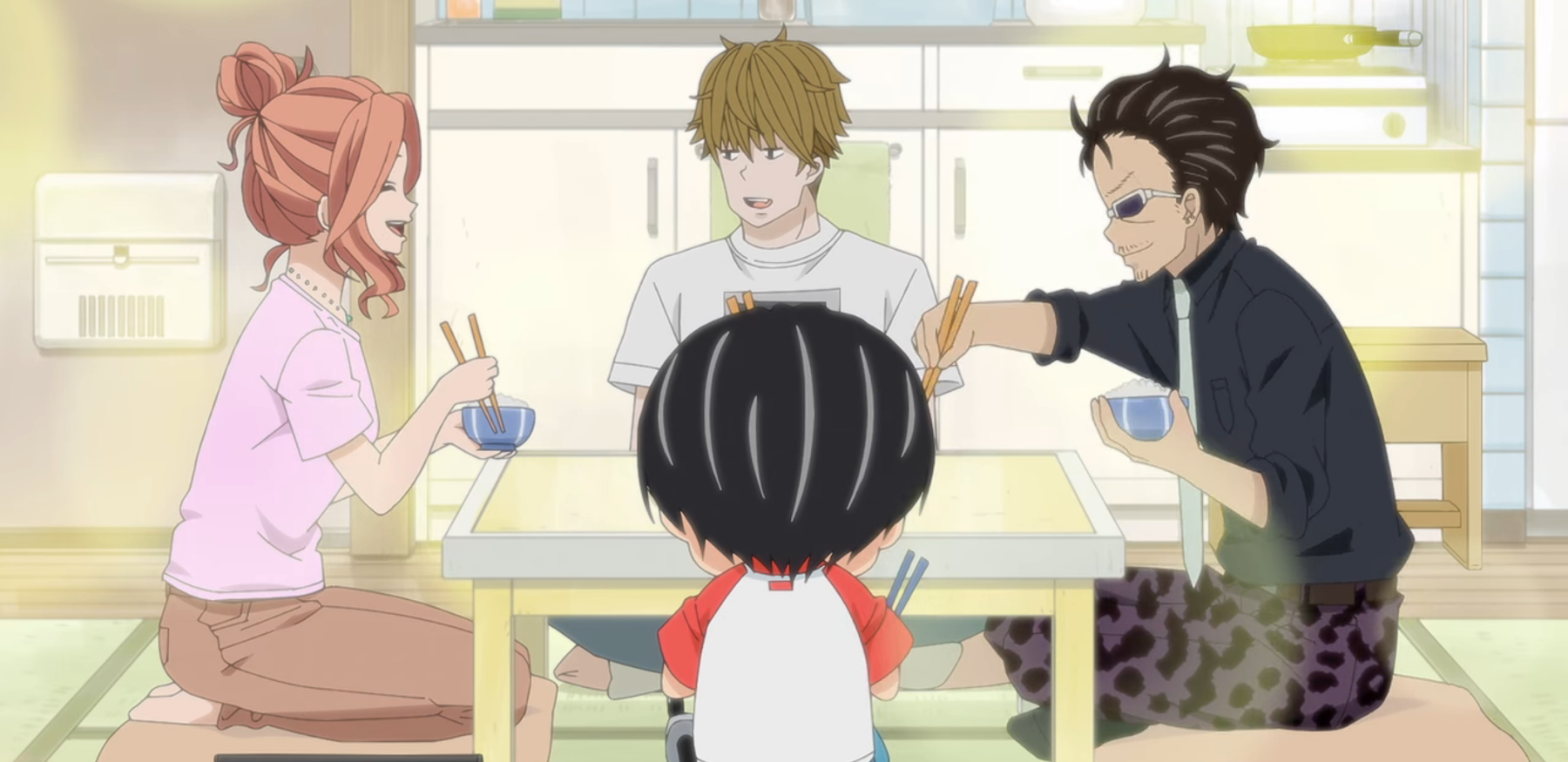Audience surrogates are a common trope across various types of media, and for good reason. By providing a character that has the same questions and observations as a viewer, an author can organically deliver information as well as give viewers a solid entry point into the cast. A good audience surrogate is relatable, can be funny and will help to connect the viewer to the story, but a great audience surrogate will help the viewer reflect and reconsider their own lives. This is where the anime Kotaro Lives Alone excels.
Toward the forefront of Kotaro Lives Alone’s colorful cast of characters is Shin Karino, Kotaro’s closest neighbor and the least eccentric of the main cast. He is a struggling mangaka, barely keeping up with deadlines and not in a position to become the primary caregiver of a lovable four-year-old. Despite this, Shin becomes Kotaro’s closest friend throughout the show, stepping into an almost parental role. It is this combination of Shin’s lack of remarkability and his character development that makes him a perfect audience surrogate.
Relatable and Autonomous
Shin’s character motivations are simple and understandable. He wants to do the right thing while also minding his own business. His character is designed to be relatable to a wide audience of people who may have good intentions, but largely avoid active involvement in situations they don’t consider themselves a part of. This distance is common for audience inserts, as viewers may wish the best for characters but don’t actually have any agency in the story. Shin’s minimal defining characteristics are what make him easy to relate to and connect with.
While the presence of Kotaro is the one to initiate the change in Shin’s behavior, it’s a series of personal choices that lead to his development. From the first episode, it is Shin’s decision to accompany Kotaro to the bathhouse. He was not asked -- he simply came to the conclusion that it was the responsible thing to do to make sure Kotaro was safe. In fact, this is how most of his decisions surrounding Kotaro are made.
Shin's Character Growth
As the show progresses, Shin becomes more and more present in Kotaro’s life, and never because Kotaro asked for help. Similarly, the information Shin learns about Kotaro’s past isn’t from direct questioning, but instead by picking up on subtle hints or from others telling him. From an audience perspective, his increasing responsibilities in Kotaro’s life are reasonable as he learns more about Kotaro’s situation. Almost as a learned habit, this makes Shin more confident and able to recognize when others need help.
What makes Shin exciting as an audience surrogate is his ability to inspire potential audience development along with his character growth. It isn’t unusual for audience surrogates to have either flat character arcs or character arcs that grow to a point where they are no longer a suitable audience surrogate. Shin’s realistic progression of decisions makes him a perfect balance of maintaining continuity while also showing audiences how they themselves can improve.
With the main theme of the show being overcoming past trauma through community and support, having a character show viewers that they can become part of such a community through small actions is an admirable creative choice, and one that doesn’t fall flat. By viewing the incremental growth in Shin’s character, the audience is given the opportunity to imagine incremental growth within themselves.
Learning to Step Up
At its core, Kotaro Lives Alone is a story about childhood neglect and how to heal from that trauma. One of its most important aspects is that it is not the role of the child to recover or seek help on their own -- it’s the responsibility of the adults around them to step up.
Shin takes up this role, however reluctantly, but ultimately shows the audience that it is their responsibility to recognize when there is a problem and figure out how to help. This is the true potential of a well-crafted audience surrogate.





